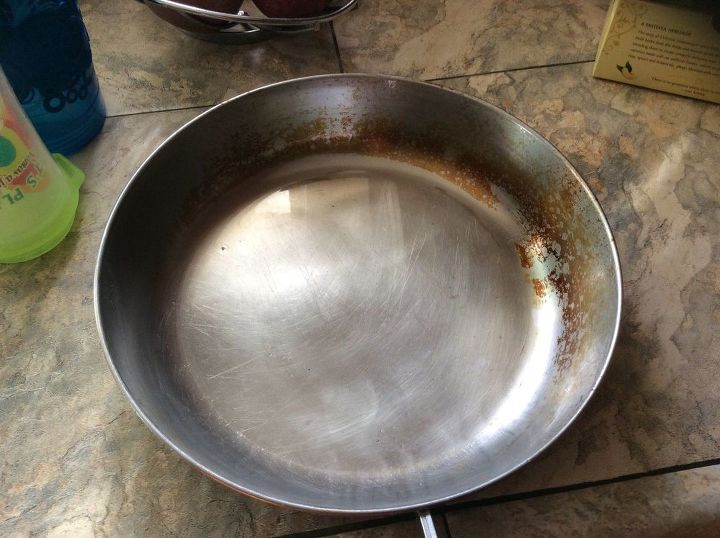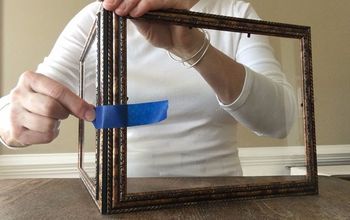How do I remove floor wax from a stainless steel refrigerator?

My son just bought a new home. The previous owner had waxed the hardwood floors and used a machine to remove the wax. The wax sprayed on the front of the refrigerator. How can we remove the stuck on wax without damaging the stainless steel?
Related Discussions
How to clean a mirror without streaks?
Every time I clean my mirrors, they end up having tons of streaks and almost look worse than before I started. What could I use to clean them that won't leave streaks... See more
How to clean burns on stainless steel pans?
Help! I burned my pan. How do I clean stainless steel cookware that's been burned?
How to clean shower doors
How to clean glass shower doors
How to clean hardwood floors in the kitchen?
What is the best way to clean hardwood floors in the kitchen?
How to clean my kitchen cabinets from grease?
My kitchen cabinets are embarrassingly greasy. Please share your degreasing tips with me so I don't have to cringe every time I glance at my cabinets.
How do I remove dried on raw egg from stainless steel
A raw egg has dried in the bottom of a commercial refrigerator. What can I use to remove this?
What can I use to remove travertine sealer from stainless steel fridge
after stripping our travertine floors I sealed them with a sealer, using a spray bottle to spread it, but it got on our fridge ad even cabinets. Didn't notice it unti... See more


You might be able to use a very small amount of mineral spirits on a soft rag. I would apply it to the rag first and I would wipe with the grain of the stainless steel (yes there is a grain to stainless steel--you have to look very carefully). I do not believe that mineral spirits would harm the stainless steel. You will want to clean the mineral spirit off with some warm soapy dishwater and dry the surface well with a soft towel.
Try using a Mr. Clean Magic Eraser, followed by a wiping down with Windex. If the wax is thick, scrape it off with a plastic credit card, NOT metal, which will scratch.
Ammonia is used to remove floor wax.
Do not use a Magic Eraser. It works like a very light sandpaper and will scratch the fridge. If it is thick get a plastic scraper from the auto store and try that first. There are some stainless cleaners that are quite greasy, try using them with the scraper.
Here is some additional info on cleaning stainless
Part II: Maintaining the Finish
Naturally, you’ll want to maintain the piece’s finish as best you can over time. For a brushed finish, this can typically be accomplished with simple household items like baking soda, flour, or vinegar. You can apply these products to any stainless steel piece to give it a quick yet effective polish, though it might take a little elbow grease to get the exact look you’re going for.
Let’s have a brief look at each one:
Part III: Things to Keep in Mind
Hope this helps
When I have to clean wax off a surface I worry about scratching, first I use a small plastic scraper I keep just for this type of thing. Get as much off as you can, and then remove the rest with Goo Gone and a microfiber cloth. Just wipe any residue off with a clean microfiber cloth.
Ammonia removes wax. Use one cup of lemon scented ammonia to one gallon warm water. Wipe with a sponge in the direction of the grain. Then rinse with warm water and dry well.
I would try lemon essential oil and a microfiber cloth
Take it outside and use gasoline. Keep it away from any ignition source.
WD-40
Ammonia. Dilute with water. Elbow grease!
I've used Cerama Bryte to clean my stainless steel, not sure if it'll remove the wax but it's worth a try. It's been magic for me.